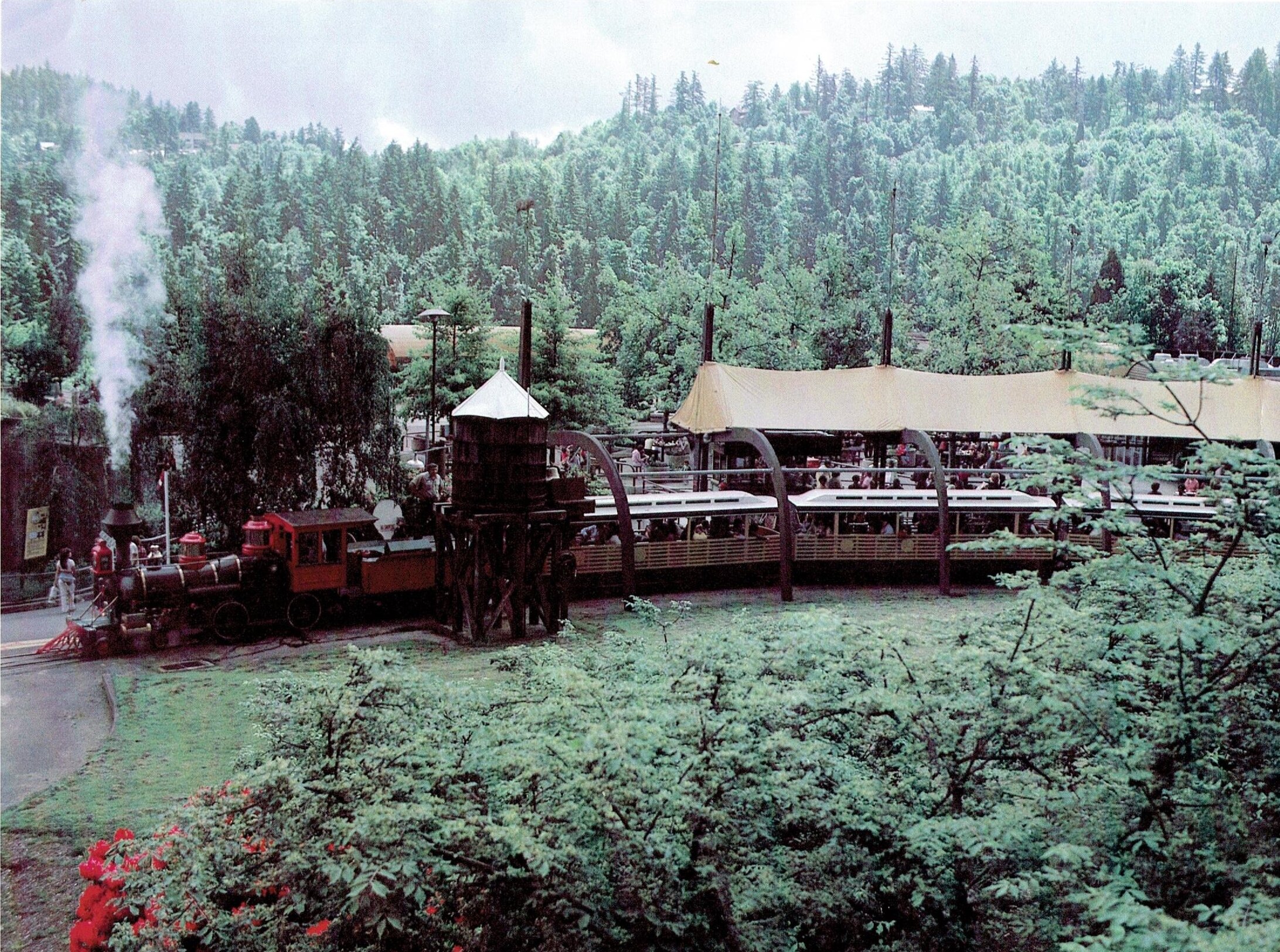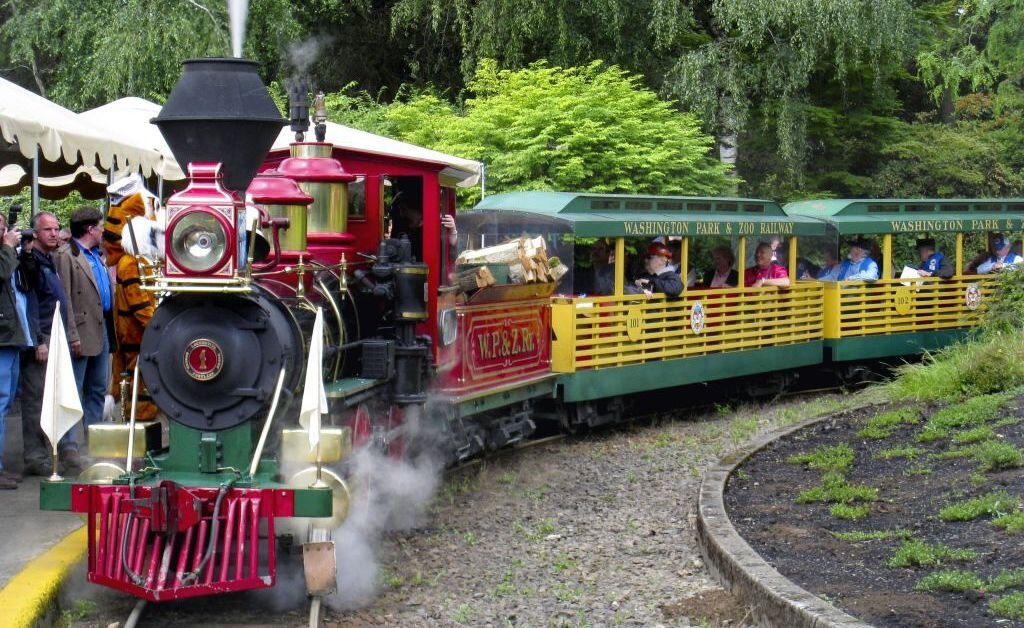
History

This story begins in 1958, when the Washington Park and Zoo Railway was born and a regional treasure opened to a very appreciative public.
Some 200,000 passengers rode the train that summer. The magnificence of the Zooliner rolling down the tracks heralded the prosperity of this post-war era. The Rose Garden Loop opened in 1960, a 20-minute ride through a Douglas fir and red cedar forest. The railway was at this time 2.5 miles long.
At the Washington Park Station, the scenery opened to views of the city and Mt. Hood beyond. Everyone agreed it provided the most spectacular ride of any recreational railroad in the nation.
You can read about the Zoo Train in the 1959 Congressional Record.
The strategy was for ticket sales to provide funding not only to sustain the railroad but to build the zoo and care for the animals. The railroad was the Golden Goose of the zoo and has continued to generate more funds annually than it takes to operate.
Even before the first train moved, over 25,000 people had assisted or contributed to building the railroad. The railroad has carried more than 7 million passengers and is beloved by multiple generations of Oregonians.

Metro took over running the zoo from the city of Portland in 1976. It managed the railroad as well, including the trackway to Washington Park.
In 2013, the portion of the line inside the zoo was shortened to make room for new exhibits. In spite of assurances that the full line would reopen to Washington Park after the construction within the zoo, Metro chose not to maintain the line nor repair ongoing issues as they occurred, thus keeping the Rose Garden Loop closed.
In 2018 the City of Portland adopted a master plan for Washington Park. A draft called for the railroad to be replaced with a walking path. After howls of protest, the final plan included an unworkable compromise to create a multiuse path beside the tracks if train service were restored.
The Washington Park and Zoo Railway was placed on the National Register of Historic Places in 2020 due to its national importance as an outstanding example as a small excursion railroad. This status means that removing the railroad or building a trail on the route is now infeasible due to the “adverse effect” this would have on the integrity of the railroad and its setting.
You can read a more in-depth review of the Railway history here.
Photos courtesy of Patrick Fitzgerald

Get On Board!
Here’s how you can help…
-
Be counted among the thousands of supporters of the Rose Garden Loop Restoration on this Change.org petition.
Sign The Petition Here -
Every dollar helps! Your donation will aid in our mission of restoring the historic route including volunteer efforts, advocacy campaigns, and necessary professional services.
-






